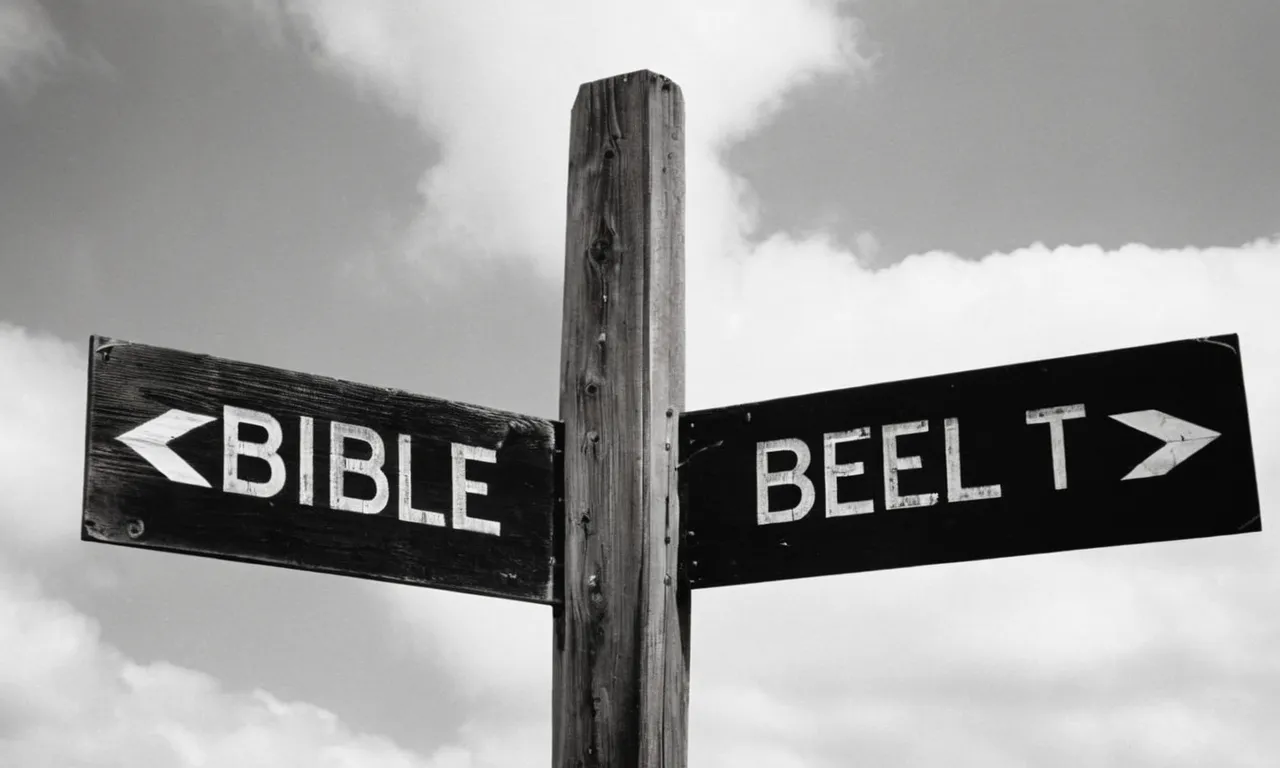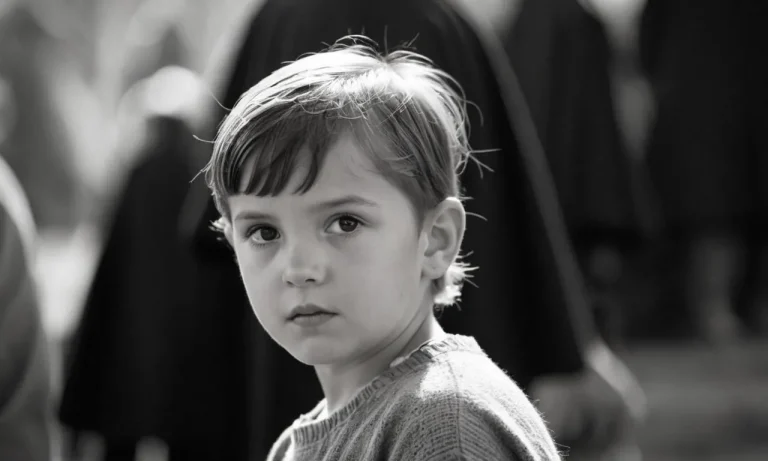Where Is The Bible Belt?
The Bible Belt is a region in the southern United States where Evangelical Protestantism plays an exceptionally strong role in society. If you’re short on time, here’s a quick answer: the Bible Belt stretches across the South from southwest Texas and Oklahoma through the Deep South states of Mississippi, Alabama, Tennessee, North Carolina and Georgia.
In this comprehensive guide, we will dive deep into defining the geographic boundaries of the Bible Belt region. We’ll explore its history and culture, find out why it’s called the Bible Belt, and understand what life is like there today.
Defining the Boundaries of the Bible Belt
Southwest Through Deep South
The Bible Belt generally refers to an area spanning the southeastern and south-central United States where Protestant Christian church attendance is markedly higher than the nation’s average. This region stretches southwest from Virginia through the Deep South states of North Carolina, South Carolina, Georgia, Alabama, Mississippi, Tennessee, Kentucky, Arkansas, Louisiana, Oklahoma, and Texas.
The Bible Belt overlaps significantly with other cultural regions like the Upland South and Deep South which are characterized by more conservative social views rooted in evangelical Protestantism.
Not One Contiguous Area
It’s important to note that the Bible Belt is not one solid, contiguous region. Rather, it encompasses many smaller areas and urban centers dotting the Southern landscape where church membership and attendance exceed the national average.
Major Bible Belt cities include Nashville, Tennessee; Atlanta, Georgia; Charlotte, North Carolina; Birmingham, Alabama; Jackson, Mississippi; Memphis, Tennessee; Oklahoma City, Oklahoma; and more. People in these communities tend to hold more traditional Christian beliefs and belong to evangelical denominations like Southern Baptist and Methodist.
Overlap with Other Regions
There is significant overlap between the Bible Belt and other cultural regions of the Southern United States. For example, the Upland South stretches from western Virginia through Appalachia and shares the religious conservatism common in the Bible Belt.
Many sociologists also consider the Ozarks region spanning southern Missouri, northern Arkansas, and eastern Oklahoma part of the Bible Belt cultural sphere. Additionally, the Deep South states of Georgia, Alabama, Mississippi, and South Carolina contain a mix of Bible Belt and Deep South cultural influences.
History and Origins of the Term ‘Bible Belt’
Religion in Southern Culture
Religion has long played an integral role in the culture and society of the American South. Christianity, especially evangelical Protestant denominations like Southern Baptists and Methodists, has had a profound influence on the region.
Church attendance rates have historically been much higher in Southern states compared to other parts of the country. This strong Christian religious fervor in the South has been referred to as the “Bible Belt” since the early 20th century.
Several factors contributed to the prominence of religion in the South. During the Second Great Awakening in the early 1800s, huge religious revivals spread across the frontier and led to exponential church growth.
The cultural legacy of slavery and racism also impacted religious beliefs, as both white and black Southerners often turned to their Christian faith for hope and comfort amidst hardship. Some scholars believe the agricultural lifestyle of the rural South, along with lower levels of education and urbanization, fostered a culture more receptive to evangelical Protestantism.
When Was the Term First Used?
The exact origins of the term “Bible Belt” are unclear, but historians trace it back to the 1920s. One of the earliest known uses was in the 1926 book The Bible Belt: A Problem in American Church Life by Baptist minister Kenneth Scott Latourette.
This book discussed the South’s conservative Christian culture and high levels of religiosity. Other early uses of the term include H.L. Mencken’s 1935 essay “The Sahara of the Bozart,” which described the South as a culturally barren region dominated by religious fundamentalism.
By the late 1930s and 1940s, “Bible Belt” was commonly used in the national press to refer to Southern states with high Protestant church membership. The term reflected the South’s reputation as a socially conservative region pious adherence to evangelical Christianity.
Usage of the phrase accelerated over the course of the 20th century. Today “Bible Belt” is entrenched in America’s cultural lexicon and strongly associated with states across the South.
Characteristics and Influence of Evangelical Christianity
Church Attendance Rates
The Bible Belt is known for having some of the highest rates of church attendance in the United States. Studies show that residents of the Bible Belt states such as Alabama, Arkansas, Georgia, Kentucky, Louisiana, Mississippi, Oklahoma, Tennessee, and West Virginia attend church services more frequently than people in other parts of the country. Weekly church attendance rates in many Bible Belt states hover around 50%, much higher than the national average of around 25%.
The culture in the Bible Belt emphasizes Christian values and regular church participation. For many families, attending services on Sunday morning is just part of the weekly routine. Large mega-churches with thousands of members are also common in Bible Belt cities and draw huge crowds on weekends.
Politically and Socially Conservative
In addition to high church attendance, the Bible Belt region tends to lean politically conservative and vote overwhelmingly Republican in national elections. Issues like abortion and LGBTQ rights are hotly debated in these states.
According to polls, around 50% of Bible Belt residents believe abortion should be illegal in all or most cases. Politicians in these states often align themselves with conservative evangelical values in their campaigns.
The Bible Belt states also score low on measures of social progress. This region tends to lag behind others on issues like gender equality, access to education, and poverty rates.
Impact on Education
Evangelical Christianity also shapes education in the Bible Belt. Public schools in these states are more likely to teach abstinence-only sex education, question evolution in science class, and allow religious release time during school hours.
| State | Allows Creationism in Public Schools |
|---|---|
| Arkansas | Yes |
| Alabama | Yes |
| Georgia | No |
| Kentucky | Yes |
| Mississippi | Yes |
| Oklahoma | Yes |
| Tennessee | Yes |
| West Virginia | No |
While views differ, the culture of the Bible Belt ensures religion remains an important influence in public life. The evangelical Christian identity shapes the social and political atmosphere of this region.
Variations Within the Bible Belt States
Rural vs Urban Areas
There are notable differences in religious observance between rural and urban areas within the Bible Belt states. Rural communities tend to be more traditionally religious and conservative, with higher rates of church attendance and literal Biblical interpretation.
Urban areas have more religious diversity, including growing Catholic, Jewish, and non-Christian populations. Mega-churches thrive in some suburban areas, while secularism is more common in large cities like Atlanta, Dallas, Charlotte, and New Orleans.
African American Churches
African American Christian denominations, such as the National Baptist Convention, have a strong presence in the Bible Belt. The emotional worship style in black churches contrasts with the more solemn services in white evangelical churches.
Issues like racial justice and economic equality are priorities in African American churches, which have played a pivotal role in civil rights movements.PBS notes the Bible Belt has the largest concentration of black Christians in the U.S.
Differences Between States
The Bible Belt includes Southern states like Alabama, Mississippi, and South Carolina, which are heavily Baptist. But there are variances between states. For example, Pew Research shows Arkansas has a higher share of evangelicals than Georgia.
Louisiana has more Catholics due to its French and Spanish history. Virginia has fast-growing liberal areas like northern Virginia outnumbering the conservative “Bible Belt” in southern and western Virginia.
The economy, ethnic makeup, education levels and immigrant populations help shape each state’s religious character.
Conclusion
In summary, while the Bible Belt is not one clearly defined area on a map, it is a cultural region united by the strong influence of evangelical Protestant Christianity across much of the South. This region shaped by faith has had significant impacts on southern society, politics and education over time.
Of course, there is still diversity in religious observance and beliefs across different cities, ethnicities and states within the Bible Belt itself.








